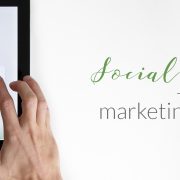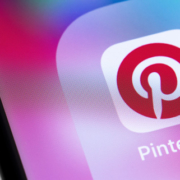Are Facebook Ads Relevant In 2020?
Facebook advertising is still one of the best ways that brands connect with over 3 billion users on the network. However, the algorithm, targeting, and types of ads constantly change, which makes it difficult for some advertisers to see successful results from Facebook ads.
Brands need to look at Facebook as a way to reach target audiences and get their message directly in front of the customers that will most likely convert.
Overall, this platform offers incredible value for tight marketing budgets, conversion rates, and ROI when used correctly. In fact, with the right strategy, businesses will only pay when their ads reach the most valuable customers.
So, Do Facebook Ads Work?
Most brands think that you have to have a big advertising budget to make Facebook campaigns convert into successful ROI.
False!
You actually can produce results with just $5 to $10 a day on Facebook. Of course, in our experience as a Facebook advertising agency, you’ll get more leads and conversions by up that to at least $50 a day.
To be successful with Facebook advertising, brands have to think about where customers come from on Facebook, why they engage with certain content, and what factors trigger a transaction.
In addition, you have to increase your chances of return by doing the following things:
- Set up multiple audience segments through targeting and customer lists
- Test different landing pages and ad designs
- Track campaign conversions with the Facebook conversion pixel
- Follow your KPIs and measure results by ad groups to see what’s working
If you aim to increase micro-conversions such as likes, shares and followers, as well as macro conversions like transactions on your website, then you will get more feedback and understand your audience better.
The point is that Facebook advertising not only works to bring in revenue, but it can also help you with valuable insights into audience behaviors and what transforms them into paying customers.
With that said, there are some mistakes that brands make with Facebook advertising that immediately halt their success and make them believe that their campaigns will never convert. Instead of giving up, brands need to re-evaluate what they are doing and avoid these mistakes.
Mistakes to Avoid with Facebook Ads
1. You Weren’t Clear About Your Goals
What metrics did you determine would measure your Facebook campaign success? Most businesses just want conversions, but there are so many types of conversions to consider. For example, did you want engagement like followers and likes or did you want to make real revenue? Not only that, did you want to sell certain products more than others?
Facebook campaigns ask advertisers what their campaign goals at the very beginning of the setup process, and it can be confusing.
When looking at these marketing objectives, you probably think, “I want my Facebook campaign to increase all of those!” Any Facebook advertising agency will tell you that each of these goals is tied to certain metrics and bidding constraints, so when considering what objective to pick, you have to base it on your business goals first.
For example, consider the following goals and determine what matters most:
- Brand awareness and reach
- Local customer growth
- New followers or page likes
- Post shares, likes, and comments
- Email subscribers
- Lead generation
- Website click-throughs
- On-site purchases and higher sales
You should have a goal in mind and consider that your top priority when selecting your objectives and designing your campaigns for Facebook.
2. Picking the Wrong Ad Formats
You might be new to Facebook and not sure how to pick the right ad format. Perhaps you didn’t even know that there are several ad formats to choose from. In other cases, you may never have analyzed your ad performance and tested other ad formats to see what works better.
Facebook also releases new ad formats all the time. For example, Facebook rolled out Canvas ads that allow brands to set up a one-page style user experience right within a user’s mobile news feed.
If you haven’t checked out the different ad types available, you should look ta all of the formats and assess which one would have the greatest impact on your customers. While images and videos are still the highest converting ad types, you may need to test ad formats to see if you reach your targets faster and capture more attention.
3. Not Testing Enough
If you only have one ad set, you will never know your campaign potential. Facebook campaign success is designed around having multiple ad sets. They have different bid types, targeting data, and ad creatives. While it’s easy to set up one campaign with one ad set, you will never if one audience segment could convert higher than another simply by separating it and directing it to a different ad creative.
However, digital marketing managers can go crazy with too many ad sets and spoil a good marketing budget. The rule here is to limit ad sets to a maximum of 5 or 6 at one time.
4. Your Targeting is Too Broad
New advertisers to Facebook may trust the social network to accurately gauge whether their target is too broad. After all, Facebook provides meter that tells you what your potential reach and cost is when you set up targeting. However, advertisers must always remember that Facebook is first and foremost a business trying to make money.
When selecting who to target, brands must think about specific audiences who convert the most. This data may come from your CRM, email subscriber list, Google Analytics, user surveys, or simple market research, but brands must have profiles in mind of their ideal customers.
Next, Facebook targeting allows you to select all kinds of factors, such as location, income, gender, marital status, purchase behaviors, interests, employment, and many other factors. It’s up to you to decide what audiences will engage the most with your content. Otherwise, you’ll end up wasting budget advertising to people on Facebook who don’t care about your products.
If you are seeing low engagement with your campaigns, the best thing you can do is narrow your targeting further and set up multiple audience segments to test which targeting factors truly create conversions.
5. Your Audience Doesn’t Understand Your Message
When advertisers jump on Facebook, it’s easy to think that targeting and ad creative will just create conversions, right? Wrong. Facebook users have a limited attention span, and to get this group to act on your ads, you have to specify what you want them to do. The difference with successful ads is that they have a clever ad copy that persuades customers to take action.
Your call-to-action (CTA) in the ad copy and the button you select with your ad truly matters. You don’t need to be long-winded with your copy and explain every little benefit. Instead, just follow this method:
- Grab the user’s attention with a headline
- Focus on your best feature (Don’t know? Test different ad language)
- Create intrigue so people click on your ad
- Make it simple and quick to the point
Ideally, you want less than 14 words for your ad posts and under 18 words for your link description. This keeps things simple and straightforward, which is what Facebook users respond to the most and what Facebook wants when people make ads.
Get Started With Facebook Ads And Succeed
In the past, we asked ourselves if Pinterest Ads were worth creating and running in today’s day and age. Now we ask Facebook Ads the same question.
The answer is that they are still critical to a business’ digital marketing strategy. However, Facebook Ads as a platform can be confusing and overwhelming if you’re starting out. Make sure you avoid the common pitfalls that businesses fall into when they advertise on Facebook.
Need help succeeding on Facebook? iSynergy is a leading digital agency that is built around our client’s success. Contact us today to get started with a consultation.











